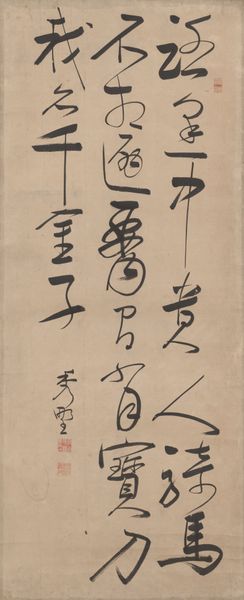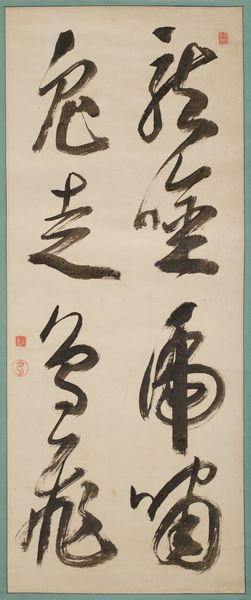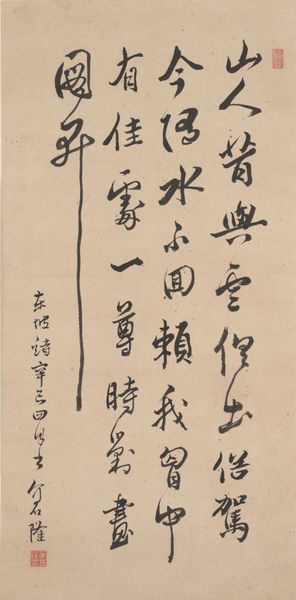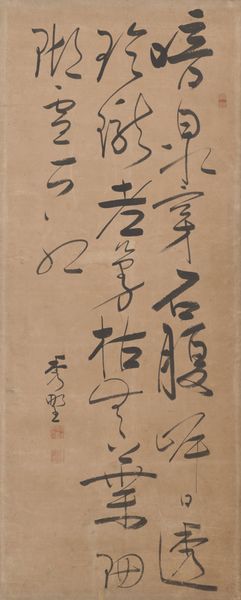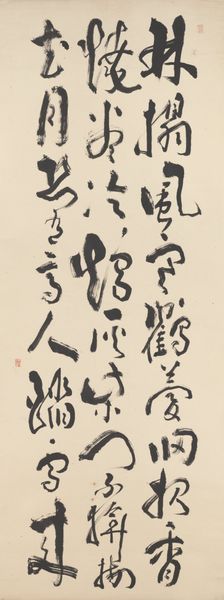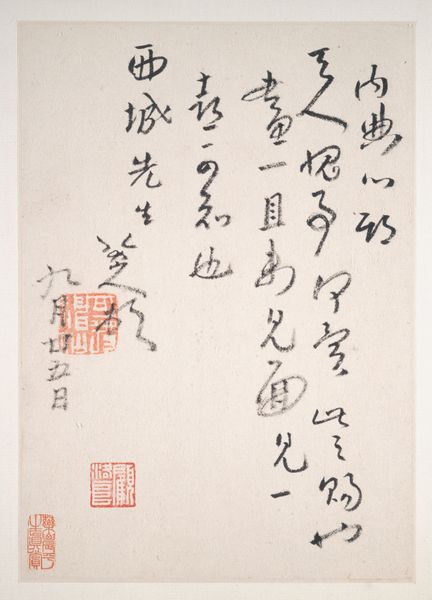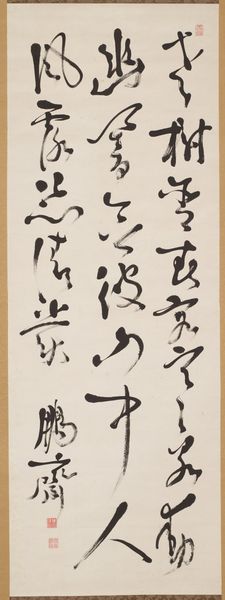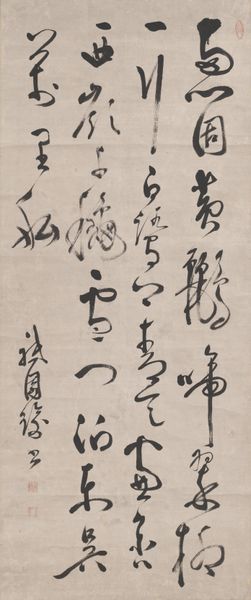
Dimensions: Image: 74 3/8 × 29 1/4 in. (188.9 × 74.3 cm) Overall with mounting: 8 ft. 7 3/4 in. × 34 1/4 in. (263.5 × 87 cm) Overall with knobs: 8 ft. 7 3/4 in. × 38 in. (263.5 × 96.5 cm)
Copyright: Public Domain
Editor: Here we have "Poem by Wang Wei," created by Dong Qichang between 1632 and 1636, an ink drawing. It's really captivating, there's an interesting tension between the stark black ink and the off-white paper that it's on. What speaks to you most when you look at this artwork? Curator: For me, it’s about understanding how this piece embodies artistic labor within its cultural and historical moment. Consider the preparation of the ink, the sourcing of the paper—these processes speak volumes about the resources and knowledge at Dong Qichang’s disposal. The very act of calligraphic inscription wasn't merely aesthetic; it was a display of scholarly training and a participation in a broader system of cultural production. What about the specific *kind* of ink impacts your reading? Editor: I guess, focusing on just the materials makes me think more about the access Qichang would have needed to the highest quality materials. Did that kind of labor and access impact what was considered “high art” versus “craft?” Curator: Precisely! The notion of ‘high art’ in this period was intimately tied to the material conditions of its making. Access to rare or refined materials, along with specialized training, elevated calligraphy and painting above other forms of craft. We can consider the social implications inherent in such hierarchies. How does viewing this through a materialist lens complicate our understanding of artistic value? Editor: It shows how cultural significance isn't just about talent, but is tied to systems of power and access! Thinking about art this way pushes me to consider everything that goes into making an artwork valuable, not just how it looks. Curator: Exactly! And it also begs the question: Whose labor is valued, and whose is obscured in the creation and reception of art? By considering the materiality and production of this piece, we start to unpack these crucial questions.
Comments
No comments
Be the first to comment and join the conversation on the ultimate creative platform.
